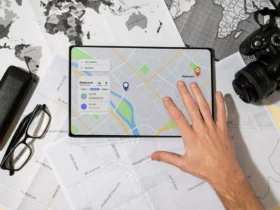3 Simple Steps to Implement Collaborative Robots in Car Manufacturing
Do you plan to use collaborative robots in car manufacturing but do not know where to get started? Worry no more. This article walks you through simple steps to get started quickly.
After reading this article, you should find it easy to approach a typical robotics supplier, buy a robot and improve your car manufacturing business through a world-class automation tool.
First, you should understand the full potential of collaborative robots. Here, you should know what makes the robots propel your ROI.
Then, you should spot the four typical robotic arms to buy. That depends on the efficiency you seek in car manufacturing.
Next, you should identify primary areas to use a typical collaborative arm, such as part installation, assembly, machine tending, and cutting.
Finally, this article explains the four ideal types of collaborative robots to apply. Let’s get started.
Understand the Uniqueness of a Collaborative Robot
A collaborative robot (cobot) works alongside human beings. The chief motivation behind collaborative robots’ invention was to do away with the annoying traits of traditional robots.
For example, traditional industrial robots were monstrous. That meant you had to acquire an extensive piece of land to manufacture cars. Worse yet, their intelligence was underdeveloped, making them risky in a human workplace.
You may be wondering what robotic intelligence is and how it has grown in collaborative robots.
Artificial intelligence is the ability of computers to work autonomously by understanding their workspace. There are three core classes of artificial intelligence.
The first class of intelligence is weak intelligence. Here, the robot specializes in a specific thing and cannot produce unexpected results even after extended exposure to the environment.
The second class of AI is general intelligence. Here, the robot has an intelligence closer to that of a human being. Most of the robots can learn about their work environment.
Their performance improves drastically with time. Cobots possess advanced sensing abilities. For instance, a typical collaborative robot can have a force-sensing base.
The robot can accommodate a payload of about 35kg. It halts operations when an extra force comes into its path. Some car manufacturing collaborative robot arms use skin sensing powers to work alongside humans. They conduct the heat of their environment and will slow or halt operations if a human employee approaches their workspace.
The last type of intelligence is the ASI (artificial superintelligence). Artificially super-intelligent robots are brighter than human beings. They are yet to evolve in the market.
They can collaborate amongst themselves. And produce work quickly, be exceptionally accurate, and have emotions for other robots and humans.
You can use a typical cobot in the following areas.
Four Typical Areas in Car Manufacturing to Apply Collaborative Robots
You can introduce or transfer collaborative robots to the following areas. That enables you to get the ultimate output and prompt returns.
1. Part Installations
One of the most crucial traits of collaborative robots is that they are sensitive to their environment. They can see, feel and locomote in the desired path. The magnificent vision is relevant in car manufacturing to install parts.
Their advanced sensors enable them to notice delicate car parts, such as door panels, fenders, and windscreens.
Another significant characteristic that makes collaborative robots applicable in part installation is their prowess in offsetting. They rarely insert extra force when installing the car parts.
2. Assembly
It would help to use collaborative robots in gathering car parts, such as motors and pumps. Alternatively, you can use them for logistics.
For instance, certain firms in Germany use Universal Robots robotic arms to transfer raw materials from the store to the factory floor in an automotive firm.
Cobots are crucial in car part assembly because they are precise. They also enable you to accomplish repetitive tasks promptly. Examples of arms you can use are cartesian, articulated, SCARA, and delta robots.
3. Machine Tending
A typical car manufacturing workplace is risky to a human being. For example, extreme temperatures and heavy workloads could hurt humans.
That is why it would be best to apply collaborative robots to load and unload parts. You can transfer stamps and handle risky molten foundry environments.
4. Cutting and Trimming
Finally, you may consider using cobots to cut fabric, polish molds, and flash the material from molten plastic.
Four Types of Collaborative Robots to Use in Car Manufacturing
The four main cobot types applicable to car manufacturing are hand guiding, power and force limiting, safety monitored store, and speed and separation robots. Here is what you should know about each of them.
1. Hand Guiding
Hand guiding collaborative robots are some of the simplest to program. All you do is grab a hand-operated device. Next, make the robot learn a new path by following the hand-operated device.
2. Power and Force Limiting
As the name suggests, Power and Force Limiting collaborative robots can autonomously navigate the work environment by paying attention to changes in the force exerted on them.
Consequently, they do not need safety barriers or external scanners to help humans in car manufacturing.
3. Safety Monitored Store
Safely Monitored Store collaborative robots have closer traits to those of traditional industrial robots. The notable difference is that they possess improved motion sensing prowess.
They pause operations if a human being approaches their workspace. And need button restart to complete the assigned task.
4. Speed and Separation
Speed and Separation cobots are closely related to Safety Monitored Store. The main difference is that they are best suited to a workspace with frequent human interactions.
They have a better vision system to notice human motions. Instead of halting operations, most of them slow down production to avoid hurting humans in their workspace.
That is possible due to their warning/stop zone. A closer human presence may force the collaborative robots to stop operations until you get out of the workspace.
Conclusion
It would help understand the kernel, impact, and types of collaborative robots before using them in car manufacturing. You can then invest in a suitable cobot to boost your manufacturing output.








Leave a Reply